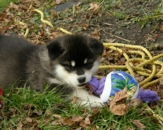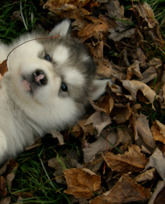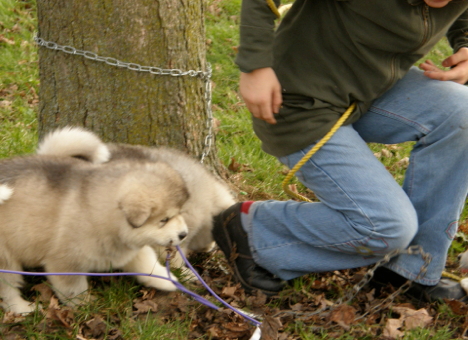a little history lesson




IN THESE PAGES WE HAVE COMPILED A SELECT AMOUNT OF RESOURSES ON THE ARCTIC AND THE INUIT WAY OF LIFE THAT YOU MAY ALL FIND INTERESTING
ARCTIC HISTORY
Have you ever wondered where the inuit came from and how they lived? Research has given us some answers but much remains a mystery. I hope this small researched article brings to light many interesting facts that have been wondering you.
Paleo-Inuit Period:5000 - 3000 years ago
Archaeologist have found in research that ,Paleo-Unuit people first came into western alaska between 5000 and 4000 years ago. They had small type camps along the coast and around the in the inland tundra. Now much evidence of their existence is still around but for some small flint tools and weapon points which the Inuit used for for hunting local game such as caribou and seals. Some of these same type of tools that were found on these locations were also found in Siberia ,which may suggest that the early ancestors had crossed over to Alaska on maybe frozen lands of the Bering Strait ,or by boat . This would have been a 85 kilometre journey.
Around 4000 years ago, people began to move about and spread eastward. These bands of people would have consisted of families and small clans . They would have been attracted to the game and followed the food source which was necessary for survival . Over the next few centuries their travelling would have spread out the people all over the northern territories all the way to Greenland and as far away south as Lake Athabasca. We know that these first peoples of Arctic Canada were very adapted to inland caribou and muscox hunting and also sea mammals such as seals.
The Dorset Period 3000- 1000 Years ago
Until about a 1000 years ago the descendants of the first immigrants were living in the central and eastern parts of the Canadian arctic. These first people had little contact with the Alaskan Eskimo people of the west. These people had a richer and had access to more natural resources . They were a very adept people and changed their tools and weapons to the changing ways of the harsher climates . In their camps we find Ivory snow-knives and small soapstone lamps. The lamps suggest that they obviously used seal oil to provide warmth . Also found was Ivory bone sled shoes which show that they used sleds to travel but no evidence suggest that dogs were used ti pull or people. Kayaks were also used based on evidence that was found.
The Dorset people were very good artists . They carved very elaborate carvings on wood and stone . They were also skilled painters and painted beautiful masks .
Archaeologists call these people the Dorset Palaeo-Eskimo because of the fact that their remains were first discovered at Cape Dorset on Baffin Island . Inuit stories and legends tell us of an ancient race that were called the Tunit. These Tunit People lived in the Canadian Arctic before the ancestors of the present Inuit arrived. These people lived in large houses made of stone . These houses were very much the same as those that were discovered some old Dorset settlements. Legend has it that this race of nomads were a strong and gentle and rather simplistic people. It seems very likely that the Tunit are the same people who left the Dorset Culture remains all across much of the central and eastern Canadian Arctic.
Thule Period
It was about 1000 years ago the climate in the arctic began to change and became warmer for a few centuries. The sea ice had decreased and large whales started to migrate to the arctic waters in large numbers. Soon ,a new group of Alaskan Inuit was making it's presence known. They had learned to hunt these whales in open seas on skin boats called umiaks ,along the coast of north Alaska . These people soon spread east across Arctic Canada and Greenland in pursuit of their prey . Theses were called the Thule Inuit, they were named after a settlement in Northern Greenland where their bones were first discovered and identified . Because the Thule People were able and to hunt whale ,it enriched their way of life more so than the Dorset People of the Canadian Arctic. The Dorset People seem to have disappeared . from most of the Canadian Arctic about this time when the Thule were thriving . Only in northern Quebec do dorset people appear to have survived longer to about 500 years ago. Again legend says that the Tunit people were driven away or killed by ancestors of the present day Inuit. Also in Greenland the Thule invaders met traded and fought with the Norsemen who came from Europe which would have been about the same time . Scattered throughout the Canadian Thule Villages consisting of of mounds built with sod over a framework of stones and whale bones can be still be found . The people who built and lived in these villages were the direct ancestors of the present Canadian Inuit.
Historic period : last 300 years
Again the climate changed about 300 to 400 years ago. The climate became colder than what it is even today. large sea ice formed and prevented the whales which was now a staple for survival from entering the central Arctic seas. Unfortunately the Thule whaling industry was decimated . The descendants of the Thule had to simplify their tools and weapons and change their way of life to adjust to the changes min reduced resources. Between the Labrador and Mackenzie Delta the Thule left their permanent winter homes on and started to spend their winters in snow houses on the sea. There they hunted seals .
At this time European whalers ,traders and missionaries began to make their presence known. They brought new tools and many ideas of a different way of life . As of about 50 years ago most canadian and european inuit were involved in their respective countries society .Only through careful excavation and study by archaeologist can we try to learn more about the Inuit and the mysteries of the Arctic. If many of these old camps and villages are destroyed by untrained people ,the chance to complete the story will be lost forever . Let us hope that time will allow researchers to finnish their work.



A little more history of the inuit






